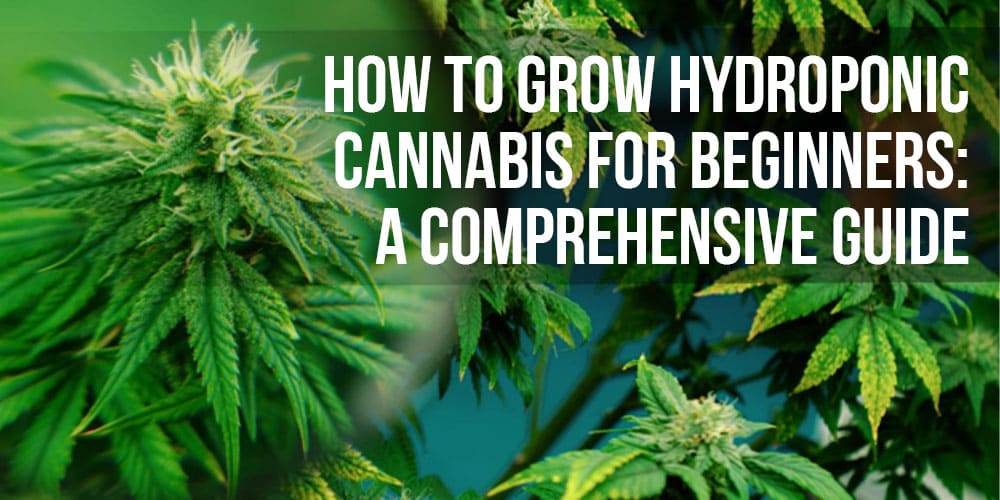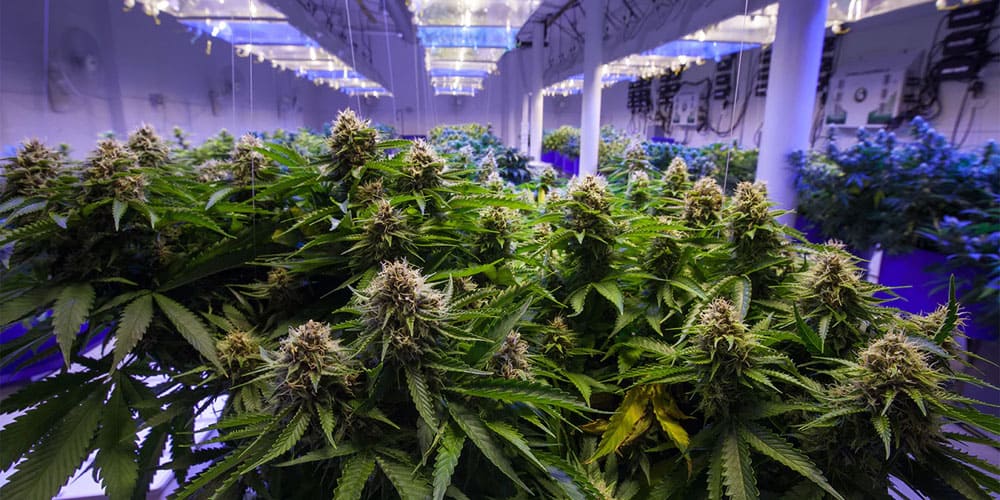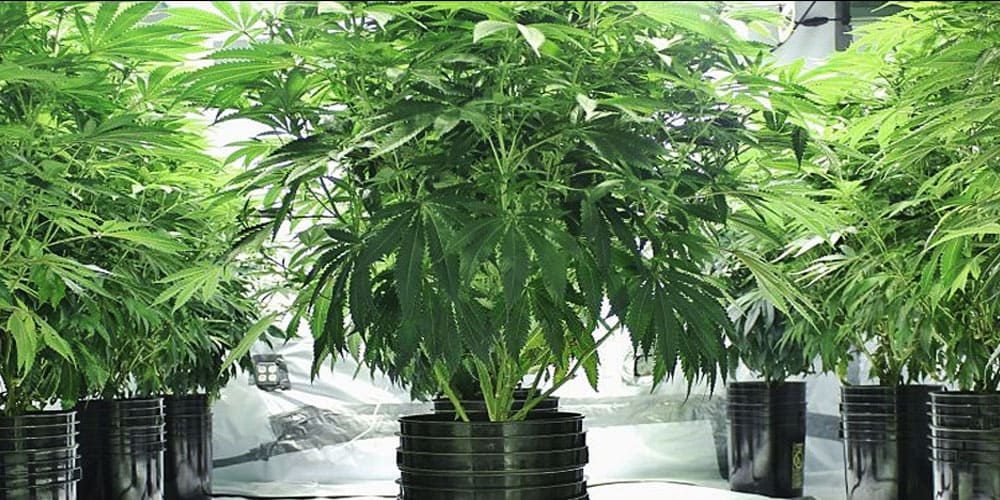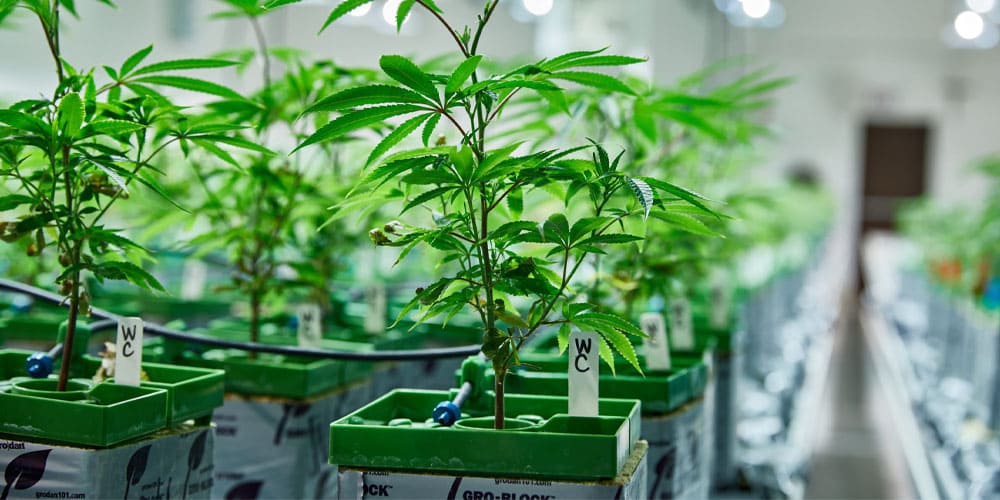How to Grow Hydroponic Cannabis for Beginners: A Comprehensive Guide

In the ever-evolving world of agriculture and gardening, the method to grow hydroponic cannabis has captured the imagination and interest of many. This technique, devoid of traditional soil cultivation, utilizes nutrient-rich water to nurture plants, thereby potentially speeding up growth and enhancing yields.
Ideal for beginners keen on delving into the realm of cannabis cultivation, hydroponics offers a streamlined, efficient, and rewarding gardening experience. This guide will take you through the essentials of setting up your hydroponic garden, selecting the right equipment, and ensuring your cannabis plants thrive.
- Stages of Cannabis Plant Growth: A Journey from Seed to Harvest
- Why You Should Grow Feminized Cannabis?
- What Is The Solo Cup Grow?
The Basics of Hydroponic Cannabis Cultivation

Hydroponic cannabis cultivation represents a significant departure from traditional soil-based gardening. This innovative method involves growing plants in a nutrient-rich water solution, allowing for direct nutrient uptake through the roots. Such direct feeding can lead to faster growth rates and potentially higher yields, as plants don’t need to search through the soil for their nutrients, making every drop of solution count.
One of the key benefits of hydroponic systems is the unparalleled control they offer over the growing environment. Factors such as nutrient concentration, pH level, and oxygen supply can be meticulously managed, providing optimal growing conditions that soil simply can’t match. This control can lead to healthier plants and cleaner, more potent cannabis.
However, hydroponics does come with a steep learning curve. Understanding the needs of your cannabis plants and how they interact with the hydroponic environment is crucial. It requires a hands-on approach to monitor water quality, nutrient levels, and plant health regularly. But for those willing to invest the time and effort, the rewards of hydroponic cultivation are vast, offering a cleaner, more controlled, and efficient way to grow cannabis.
Savor the delightful blend of flavors with the Pink Runtz Sauce Cartridge, designed for connoisseurs seeking a potent and enjoyable smoking experience anywhere, anytime.
Getting Started: Setting Up Your Hydroponic System

Choosing the right hydroponic system is the first step toward successful cannabis cultivation. Systems range from simple wick setups, ideal for beginners, to more complex drip or aeroponic systems, which allow for finer control over nutrient delivery but require more maintenance and oversight. Each system has its own set of advantages, and selecting one often comes down to personal preference, space, and budget.
After selecting a system, the next step involves assembling your hydroponic setup. This includes the construction of the hydroponic reservoir, the installation of the water pump and air stones for oxygenation, and the setup of your grow lights. Ensuring that your system is correctly assembled is crucial for its efficient operation. It’s also important to create a sterile environment from the start to prevent issues down the line.
The location of your hydroponic garden plays a significant role in its success. Factors like ambient temperature, light exposure, and even air quality can influence plant growth. A controlled indoor environment is often preferred, as it allows for year-round cultivation free from the unpredictability of outdoor conditions. This control ensures that your cannabis plants can thrive in an optimal environment tailored to their specific needs.
Choosing the Right Equipment

To successfully grow hydroponic cannabis, investing in quality equipment is non-negotiable. Key components include:
- A growing medium: Unlike soil, hydroponic systems use inert materials like Rockwool, clay pebbles, or coco coir to support plant roots.
- Nutrient solutions: These are essential for feeding your plants. Look for solutions specifically formulated for hydroponics and, if possible, cannabis cultivation.
- A water/oxygen delivery system: This ensures your plants receive the perfect balance of nutrients and oxygen. Air pumps and stones are commonly used to oxygenate the water.
- Lighting: Cannabis requires ample light to thrive. High-intensity discharge (HID) lamps and LED grow lights are popular choices, offering the intensity and spectrum needed for robust growth.
- A controlled environment: Temperature, humidity, and air circulation must be regulated to mimic the ideal growing conditions for cannabis. This might require heaters, humidifiers, dehumidifiers, and fans.
Immerse yourself in the profound tranquility of APE BREATH Premium Flower, a standout Indica strain known for its enveloping earthy flavors with a delicate touch of citrus.
Planting Your Cannabis

The initial step in planting your cannabis involves choosing between seeds or clones as your starting material. Seeds offer genetic diversity and the satisfaction of growing a plant from its earliest stages, while clones can provide a more predictable outcome, mirroring the characteristics of the parent plant. Regardless of your choice, the quality of your starting material sets the tone for the entire growth cycle.
Germination is the next critical phase, where seeds are sprouted or clones begin to root. This stage requires careful attention to moisture, warmth, and gentle handling. For seeds, methods such as the paper towel method or direct planting into a moist growing medium can be effective. Clones, meanwhile, benefit from rooting solutions and a high-humidity environment to encourage root development.
Once your seeds have sprouted or your clones have rooted, transplanting them into your hydroponic system is the next step. This transition is delicate and requires maintaining optimal conditions to prevent shock. The young plants will need time to adjust to their new environment, with careful monitoring and adjustments to light, nutrient levels, and pH to ensure they establish themselves and begin to grow vigorously.
Navigating the Growth Cycle

Cannabis plants go through several stages of growth, each with specific needs:
- The vegetative stage: This growth phase requires ample nitrogen and plenty of light (around 18 hours a day) to encourage leaf and stem growth.
- The flowering stage: Triggered by reducing light exposure (to about 12 hours a day), this stage sees the development of buds. Phosphorus and potassium intake becomes crucial here, supporting flower formation and trichome development.
Throughout these stages, monitoring and adjusting the pH level of your water is vital to ensure nutrient availability. A pH range of 5.5 to 6.5 is generally ideal for cannabis.
Step into the realm of inspiration with Medusa 7 Diamond Infused Mini Joints, where each puff brings an invigorating rush to both body and mind. With its bright citrus flavors accented by whispers of pine.
Troubleshooting Common Issues

Nutrient imbalances are among the most common issues faced in hydroponic cannabis cultivation. Symptoms such as leaf discoloration, stunted growth, or leaf drop can indicate that the nutrient mix is either too concentrated or too diluted. Regularly testing and adjusting the nutrient solution is essential for maintaining plant health.
pH fluctuations can also cause nutrient uptake problems, even if the nutrient levels are correct. Cannabis plants thrive in a slightly acidic environment (pH 5.5-6.5). Daily monitoring and adjustment of the pH, when necessary, help ensure that plants can effectively absorb nutrients.
Pests and diseases can strike even in the clean, controlled environment of a hydroponic system. Spider mites, aphids, and root rot are common issues. Maintaining a clean growing area, inspecting plants regularly for signs of stress or infestation, and implementing preventive measures can mitigate these risks. Sometimes, identifying the problem early and isolating affected plants is key to preventing a larger outbreak.
Harvesting Your Cannabis

Recognizing the right time to harvest is crucial for maximizing the potency and yield of your cannabis. The visual appearance of the trichomes, shifting from clear to a cloudy or amber color, serves as the primary indicator that the plants are ready. This change signifies peak THC concentration, and timing your harvest around this moment can dramatically affect the quality of the final product.
The process of harvesting involves carefully cutting the mature plants, followed by trimming away excess leaves to expose the buds. This step requires a delicate touch to preserve the trichomes and the cannabinoids they contain. Post-harvest, a proper drying and curing process is crucial for developing the full aroma, flavor, and potency of the buds.
Drying and curing, when done correctly, can significantly enhance the quality of your cannabis. This involves hanging the trimmed buds in a controlled environment with the right humidity and temperature to slowly remove moisture. The curing process, which follows drying, involves storing the dried buds in airtight containers, allowing them to mature and develop a smoother smoke and richer profile.















